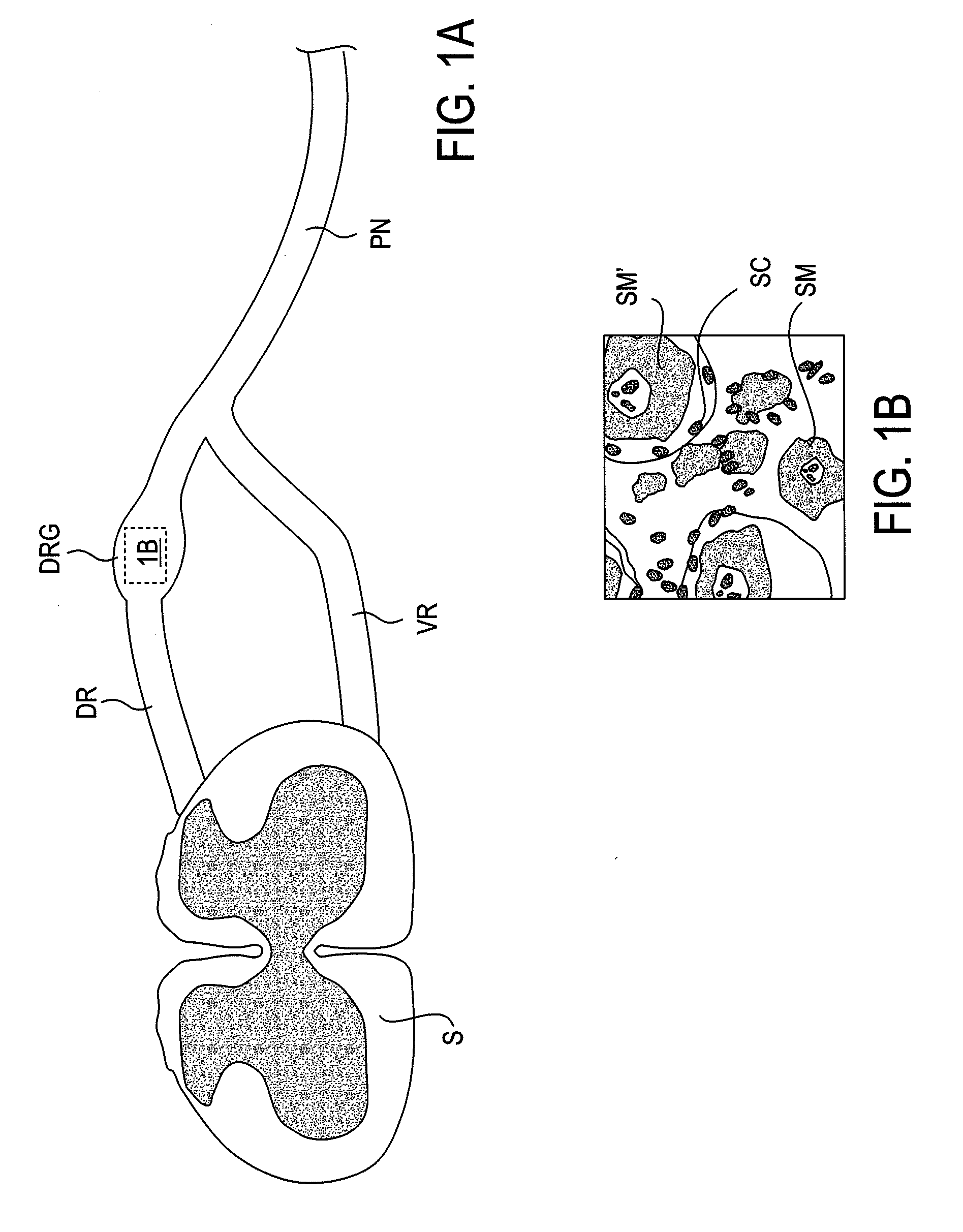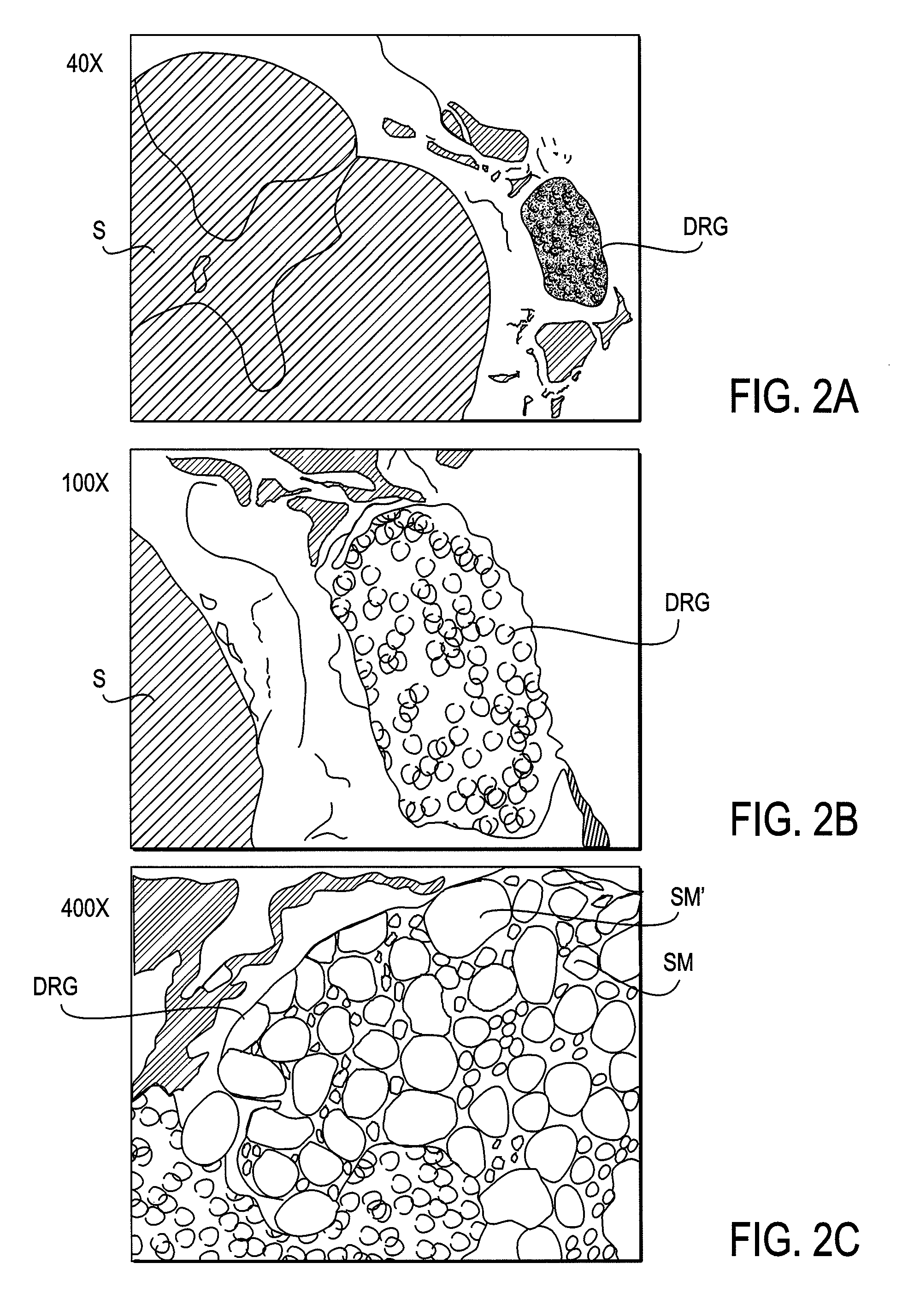Pain management with stimulation subthreshold to paresthesia
a stimulation subthreshold and pain technology, applied in the field of pain management with stimulation subthreshold to paresthesia, can solve the problems of unfavorable pain relief, unfavorable pain management, uncomfortable sensations and motor responses, etc., and achieve the effect of minimizing or eliminating possible complications and undesired side effects
- Summary
- Abstract
- Description
- Claims
- Application Information
AI Technical Summary
Benefits of technology
Problems solved by technology
Method used
Image
Examples
Embodiment Construction
[0033]The present invention provides devices, systems and methods for treating pain while minimizing or eliminating possible complications and undesired side effects, particularly the sensation of paresthesia. This is achieved by stimulating in proximity to a dorsal root ganglion with stimulation energy in a manner that will affect pain sensations without generating substantial sensations of paresthesia. In some embodiments, such neurostimulation takes advantage of anatomical features and functions particular to the dorsal root ganglion, as will be described in more detail below. The devices, systems and methods are minimally invasive, therefore reducing possible complications resulting from the implantation procedure, and targeted so as to manage pain sensations with minimal or no perceptions such as paresthesia.
[0034]FIG. 1A provides a schematic illustration of a spinal cord S, associated nerve roots and a peripheral nerve on a spinal level. Here, the nerve roots include a dorsal ...
PUM
 Login to View More
Login to View More Abstract
Description
Claims
Application Information
 Login to View More
Login to View More - R&D
- Intellectual Property
- Life Sciences
- Materials
- Tech Scout
- Unparalleled Data Quality
- Higher Quality Content
- 60% Fewer Hallucinations
Browse by: Latest US Patents, China's latest patents, Technical Efficacy Thesaurus, Application Domain, Technology Topic, Popular Technical Reports.
© 2025 PatSnap. All rights reserved.Legal|Privacy policy|Modern Slavery Act Transparency Statement|Sitemap|About US| Contact US: help@patsnap.com



